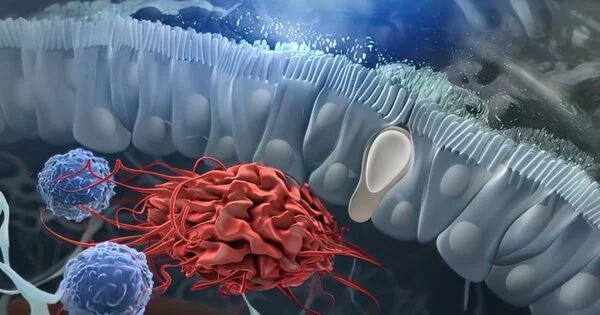The nanomaterial graphene oxide, which is used in everything from electronics to biomolecule sensors, has been shown in a new study on zebrafish to have an indirect effect on the immune system via the gut microbiome. The research was published in the journal Nature Nanotechnology.
“This demonstrates that we must incorporate the gut microbiome into our understanding of how nanomaterials affect the immune system,” says corresponding author Bengt Fadeel of the Karolinska Institutet’s Institute of Environmental Medicine. “Our findings are critical for identifying potential nanomaterial adverse effects and mitigating or preventing such effects in new materials.”
Graphene is a material that is a million times thinner than human hair. It is made up of a single layer of carbon atoms and is stronger than steel while also remaining flexible, transparent, and electrically conductive. This makes it extremely useful in a wide range of applications, including “smart” textiles equipped with wearable electronics and as a component of composite materials, where it can be used to improve the strength and conductivity of existing materials.
As the use of graphene-based nanomaterials grows, so does the need to investigate how these new materials affect the body. Nanomaterials are already known to have an effect on the immune system, and a few recent studies have shown that they can also have an effect on the gut microbiome, or the bacteria that naturally exist in the gastrointestinal tract.
Our findings are critical for identifying potential nanomaterial adverse effects and mitigating or preventing such effects in new materials.
Bengt Fadeel
The relationship between nanomaterial, gut microbiome, and immunity has been the subject of the present study performed using zebrafish. The nanomaterial investigated was graphene oxide, which can be described as a relative of graphene that consists of carbon atoms along with atoms of oxygen. Unlike graphene, graphene oxide is soluble in water and of interest to medical research as, for example, a means of delivering drugs in the body.
In the study, the researchers exposed adult zebrafish to graphene oxide via water and analyzed how it affects the composition of the microbiome. They used both normal fish and fish lacking a receptor molecule in their intestinal cells called the aryl hydrocarbon receptor, commonly abbreviated as AhR, a receptor for various endogenous and bacterial metabolites.

“We were able to show that the composition of the gut microbiome changed when we exposed the fish to graphene oxide, even at a low dose, and that the AhR also affected the gut microbiome,” says the study’s first author Guotao Peng, postdoc researcher at the Institute of Environmental Medicine at Karolinska Institutet.
The researchers have also generated zebrafish larvae that completely lack a natural gut microbiome, which makes it possible to study the effects of individual microbiome components, in this case butyric acid (a fatty acid), which is secreted by certain types of gut bacteria. Butyric acid is known to be able to bind to AhR.
Doing this, the researchers found that the combination of graphene oxide and butyric acid gave rise to so-called type 2 immunity in the fish. The effect turned out to be dependent on the expression of AhR in the intestinal cells.
“This type of immunity is normally seen as a response to parasitic infection. Our interpretation is that the gut immune response can handle graphene oxide in a similar way to how it would handle a parasite,” says Guotao Peng.
Using an advanced method for mapping the immune cells, the researchers were also able to show that a component of the immune system called innate lymphoid cells are found in zebrafish larvae. “This shows that the zebrafish is a good model for studying the immune system, including the primitive or innate immune system,” says Bengt Fadeel.















